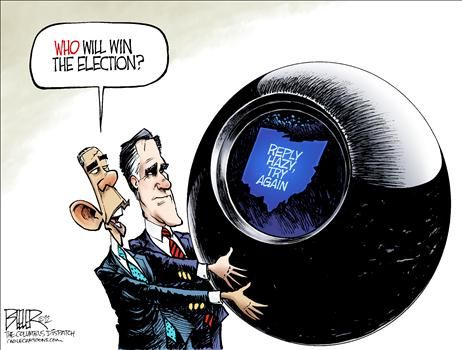
Gallup: 2012 U.S. Electorate Looks Like 2008
Composition of electorate by race, age, gender essentially the same (but party identification is much different)
Men/Women:
2004: 46/54
2008: 47/53
2012: 48/52
Men: Change from 8 to 12: +1
Women: -1
Non-Hispanic White 2004/2008/2012: 82/78/78 (no change)
Non-white: 15/19/20 (+1)
Black: 8/12/11 (-1)
Hispanic: 6/6/7 (+1)
18-29 years: 13/14/13 (-1)
30-49: 38/35/34 (-1)
50-64: 26/30/31 (+1)
65+: 24/21/22 (+1)
East: 23/22/23 (+1)
Midwest: 23/22/23 (+1)
South: 33/33/33 (no change)
West: 22/23/22 (-1)
HS or less: 32/33/31 (-2)
Some college: 33/30/31 (+1)
Coll. Grad: 15/20/20 (no change)
Postgrad: 20/16/17 (+1)
Democrat: 37/39/35 (-4)
Independent: 24/31/29 (-2)
Republican: 39/29/36 (+7)
Democrat/Lean Democrat: 48/54/46 (-8)
Republican/Lean Republican: 48/42/49 (+7)
1 comment:
What do you make of the discrepancy between these Gallup numbers on party ID and the Huffington Post's aggregate of poll samples (according to which the breakdown of the sampled voters is D/R/I: 36/29/31, approximately)?
I find it fascinating that the polls basically land in the same ballpark as this Gallup analysis for Democratic and Independent affiliation, but are spectacularly off with their Republican vote share guesstimate. Even the most O-eyed pollsters expect Romney to bring home 85% of his own vote, so undersampling that by 7% (85% of which is 5.95) is huge. Even if we allow Obama the 1.05 that is his 15% "share" of the "missing" Republicans, we still see nearly a 5% swell of support for Romney airbrushed out of the polling.
And the odd thing is that the numbers in your blog seem so much more consistent with reality than those on, say, Nate Silver's. Hmm.
Post a Comment